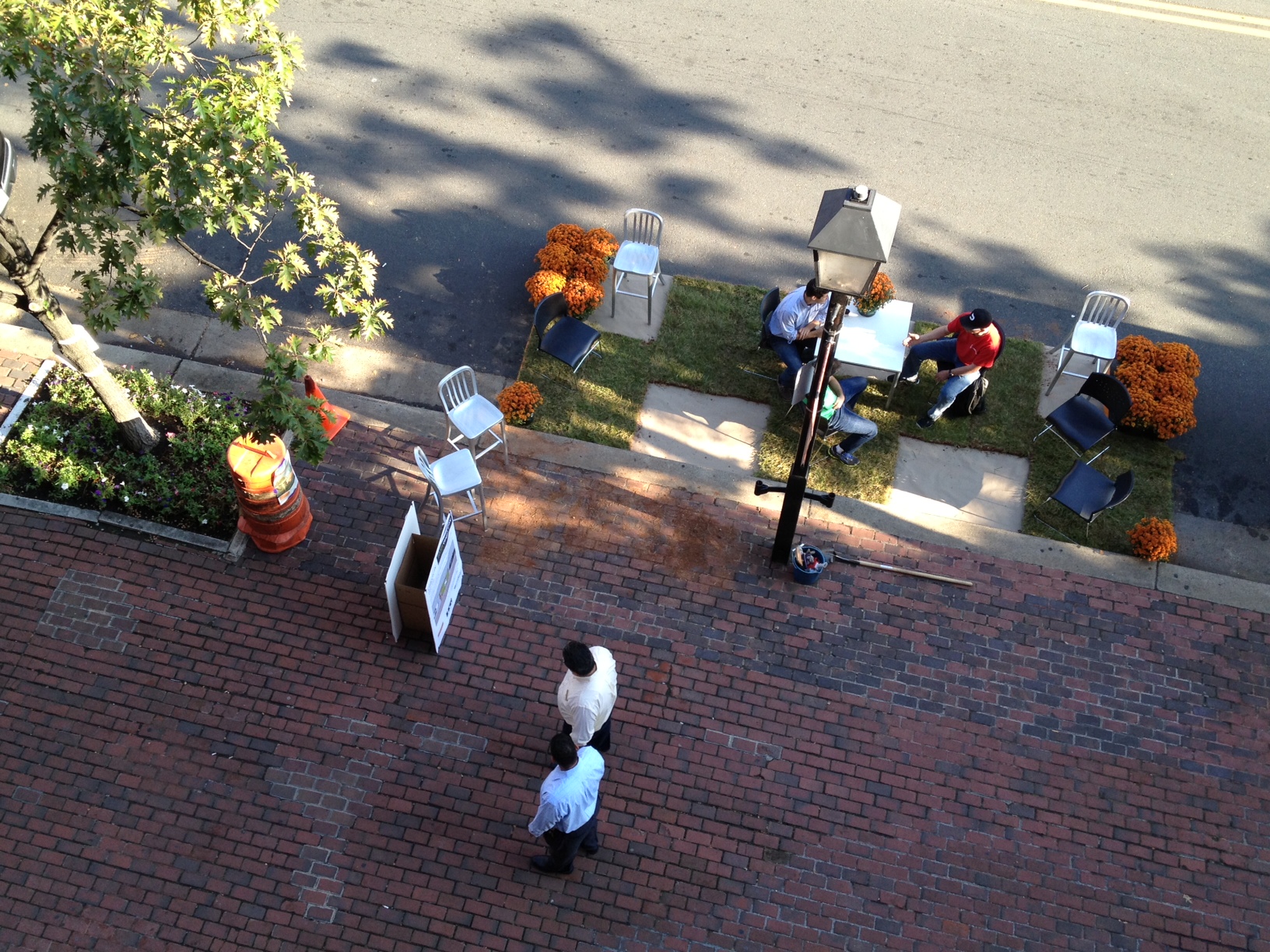On the new Plan.Place blog, the author describes the ways that small-scale, temporary projects can have a widespread, lasting impact on the way that our communities evolve and change.
In a post from the Plan.Place blog, the author explores the need to better allocate street space while acknowledging the difficulties that come with making visible, functional changes to a community. While the author commiserates with those who have "a hard time weighing the benefits of improving pedestrian and bicycle infrastructure against a potential increase in commute times or the threat of having an even harder time finding a parking spot," she argues the importance of evolving our streets along with the rest of the urban form. "The easiest, most effective way for people to understand the potential for a place (be it the road in front of their house or the empty lot down the street) to look and function differently is through actually showing them, using temporary installations rather than solely relying on renderings or precedents."
From PARK(ing) Day to pop-up bike lanes to Better Blocks projects, it is clear that there is value in testing concepts with the community, whether or not you have a long-term goal of a permanent project. The author includes several examples of projects big and small, and suggests experimenting with the urban form, on many scales. "If you’re considering improvements that could be easily demonstrated via a temporary project – curb extensions, bike lanes, valet parking, food trucks, more street trees, etc – why not take a chance and try it out before you and your community commit to a solution?"
"It doesn’t have to be expensive, or time-consuming. In the words of Janette Sadik-Khan, Commissioner of the New York City Department of Transportation from 2007-2013, 'if you’ve got a big, controversial project, think about lawn chairs.'"
FULL STORY: Please, Play in the Street: Urban Design for the Commitment-Phobe in All of Us

Planetizen Federal Action Tracker
A weekly monitor of how Trump’s orders and actions are impacting planners and planning in America.

San Francisco's School District Spent $105M To Build Affordable Housing for Teachers — And That's Just the Beginning
SFUSD joins a growing list of school districts using their land holdings to address housing affordability challenges faced by their own employees.

The Tiny, Adorable $7,000 Car Turning Japan Onto EVs
The single seat Mibot charges from a regular plug as quickly as an iPad, and is about half the price of an average EV.

San Diego Votes to Rein in “Towering” ADUs
City council voted to limit the number of units in accessory buildings to six — after confronting backyard developments of up to 100 units behind a single family home.

Texas Legislature’s Surprising Pro-Housing Swing
Smaller homes on smaller lots, office to apartment conversions, and 40% less say for NIMBYs, vote state lawmakers.

Even Edmonton Wants Single Staircase Buildings
Canada's second most affordable major city joins those angling to nix the requirement for two staircases in multi-family buildings.
Urban Design for Planners 1: Software Tools
This six-course series explores essential urban design concepts using open source software and equips planners with the tools they need to participate fully in the urban design process.
Planning for Universal Design
Learn the tools for implementing Universal Design in planning regulations.
Borough of Carlisle
Smith Gee Studio
City of Camden Redevelopment Agency
City of Astoria
Transportation Research & Education Center (TREC) at Portland State University
City of Camden Redevelopment Agency
Municipality of Princeton (NJ)



























